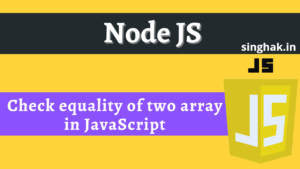Imagine you have a robot named Bob 🤖. Bob can introduce himself and say where he is from. But sometimes, you want Bob to introduce someone else!
This is where call(), apply(), and bind() help! They let you borrow a function from one object and use it for another object.
Table of Contents
1️⃣ call() – Call Me Now! 📞
Think of call() like borrowing a friend’s phone and making a call immediately.
📌 Example
Bob the robot has a function to introduce himself:
const bob = {
name: "Bob",
greet: function (city) {
console.log(`Hello, I am ${this.name} from ${city}!`);
}
};
Now, Alice wants to introduce herself using Bob’s function:
const alice = { name: "Alice" };
bob.greet.call(alice, "New York");
// Output: "Hello, I am Alice from New York!"</code>🏆 Key Takeaways
call()immediately runs the function.- The first argument is the object (
this). - The next arguments are passed individually.
2️⃣ apply() – Call Me with a List! 📜
Think of apply() like sending a text message but using a list of words instead of typing them separately.
📌 Example
Bob’s function again:
bob.greet.apply(alice, ["Paris"]); // Output: "Hello, I am Alice from Paris!" </code>
🏆 Key Takeaways
apply()works just likecall().- The difference? Arguments are passed as an array.
3️⃣ bind() – Save My Number for Later! ⏳
Think of bind() like saving a friend’s number in your phone. You don’t call now, but you can call later.
📌 Example
const greetAlice = bob.greet.bind(alice, "London"); greetAlice(); // Output: "Hello, I am Alice from London!" </code>
🏆 Key Takeaways
bind()does not call the function immediately.- It returns a new function that you can call later.
- You can preset some arguments (like
"London"in this case).
🎯 Final Comparison Chart
| Method | When does it run? | How are arguments passed? | Returns a new function? |
|---|---|---|---|
call() | Immediately | Individually: func.call(thisArg, arg1, arg2, …) | ❌ No |
apply() | Immediately | As an array: func.apply(thisArg, [arg1, arg2, …]) | ❌ No |
bind() | Later (when you call it) | Individually (like call()) | ✅ Yes |
🎭 Fun Real-World Example
Imagine you are a teacher 👩🏫 and you have a function to grade students.
const teacher = {
subject: "Math",
grade: function (student, marks) {
console.log(`${student} got ${marks} in ${this.subject}.`);
}
};
const scienceTeacher = { subject: "Science" };
// ✅ `call()`: Call now!
teacher.grade.call(scienceTeacher, "John", 85);
// Output: "John got 85 in Science."
// ✅ `apply()`: Call now with array!
teacher.grade.apply(scienceTeacher, ["Emily", 90]);
// Output: "Emily got 90 in Science."
// ✅ `bind()`: Save for later!
const gradeJohn = teacher.grade.bind(scienceTeacher, "John", 88);
gradeJohn();
// Output: "John got 88 in Science."
</code>🏆 When to Use What?
| Scenario | Use |
|---|---|
| Need to call a function immediately? | ✅ call() |
| Need to call a function immediately but with an array of arguments? | ✅ apply() |
| Need to store a function for later? | ✅ bind() |


